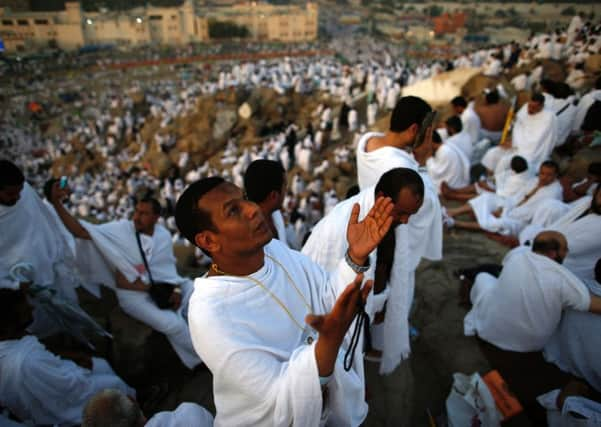Millions of Muslims begin Hajj pilgrimage but no Iranians


Notably absent this year are Iranian pilgrims. Last year, some 64,000 Iranians took part in the Hajj, but disputes with the Saudi government prompted Tehran to bar its citizens from taking part this year.
Saudi Arabia has blamed Iranian officials for the decision and suggests it was politically motivated to publicly pressure the kingdom. Iran says Saudi “incompetence” caused a crush and stampede during last year’s Hajj that killed more than 460 of its citizens.
Advertisement
Hide AdAdvertisement
Hide AdOn Friday, thousands of Iranians marched through the streets of Tehran and other Iranian cities to protest Saudi Arabia, chanting prayers against the kingdom’s Sunni rulers after midday prayers.
The Hajj is one of the world’s largest pilgrimages. It draws the faithful to the holy city of Mecca and areas around it for five intense days of rituals and prayers aimed at erasing past sins and drawing Muslims closer to God. The pilgrimage is required of all Muslims to perform once in their lifetime.
To begin the Hajj, hundreds of thousands of pilgrims circle the Kaaba in Mecca’s Grand Mosque. In a sign of humility and equality before God, the pilgrims shed symbols of materialism, entering a state of “ihram.” Women forgo makeup and perfume and wear loose-fitting clothing and a head covering, while men dress in seamless, white terry cloth garments.
Since arriving in Mecca over the past several weeks, hundreds of thousands have chanted, “Labayk Allahuma Labayk,” or “Here I am, God, answering your call. Here I am.”
While following a route the Prophet Muhammad once walked, the rites of Hajj are believed to ultimately trace the footsteps of the prophets Ibrahim and Ismail, or Abraham and Ishmael as they are named in the Bible.
Egyptian pilgrim Mahmoud Awny said the feeling of being in Arafat is “indescribable”.
“All Muslims on Earth wish they could have been here today. Thanks to Allah for enabling me to be here,” he said.
The Hajj is a physically and emotionally exhausting experience, and this year temperatures soared to 42C in Arafat. Volunteers passed out water, juice and umbrellas to shade pilgrims from the sun.
Advertisement
Hide AdAdvertisement
Hide AdAround sunset, yesterday the pilgrims headed to an area called Muzdalifa, 5.5 miles west of Arafat. Many walk the route, while others use buses. They spend the night there, most in the open air huddled near one another, and pick up pebbles along the way that will be used in a symbolic stoning of the devil in Mina, where Muslims believe the devil tried to talk the Prophet Ibrahim out of submitting to God’s will.
The Interior Ministry said more than 1.3 million people from 160 different countries have arrived to the kingdom to perform the Hajj this year.
Most pilgrims spent Saturday evening outside Mecca in a valley called Mina that houses more than 160,000 tents. Yesterday they headed to an area called Arafat for the pinnacle of the pilgrimage, an emotional day of repentance and supplication.
For the first time in more than three decades, Saudi Arabia’s top cleric will not be delivering this year’s prestigious Hajj sermon.
Al-Riyadh newspaper reported that Grand Mufti Sheikh Abdulaziz Al Sheikh, who has delivered the sermon since 1981, will be replaced by Sheikh Saleh bin Hamid.
Mr Hamid previously served as chairman of the top consultative Shura Council.